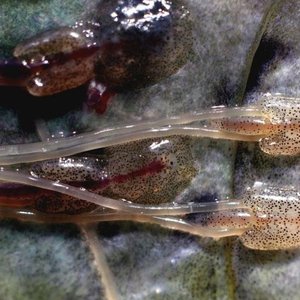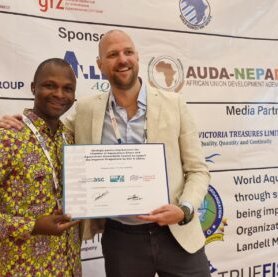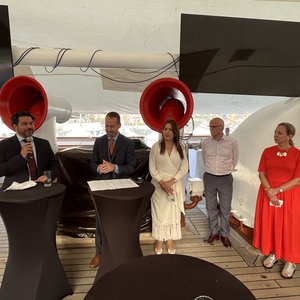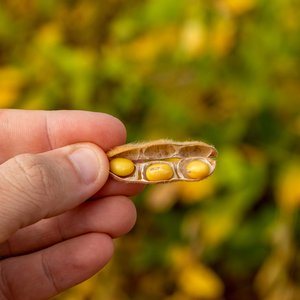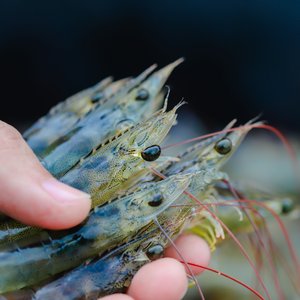Shrimp fisheries under scrutiny
Overfishing, bycatch and discards need to be urgently addressed - FAO calls for more comprehensive management of fisheries
Reducing fishing capacity and limiting access to shrimp fisheries, is likely to mitigate overfishing, bycatch and seabed destruction, some of the major economic and environmental side-effects of shrimp fishing, according to a new report FAO published today.
The Global study of shrimp fisheries reviews current problems and solutions of shrimp fishing in ten selected countries: Australia, Cambodia, Indonesia, Kuwait, Madagascar, Mexico, Nigeria, Norway, Trinidad and Tobago and the United States.
"For millions of poor vulnerable households, shrimp fishing is an important source of cash and employment," said Jeremy Turner, Chief of the FAO Fishing Technology Service.
"But shrimp fishing is also associated with overfishing, capture of juveniles of ecologically important and economically valuable species, coastal habitat degradation, illegal trawling, the destruction of seagrass beds and conflicts between artisanal and industrial fisheries," Turner said.
"With a precautionary and ecosystem approach, many of the problems caused by shrimp fishing can be mitigated - shrimp fishing, including shrimp trawling, is certainly manageable. Promoting sustainable shrimp fishing management schemes, reducing fishing capacity and addressing the issue of open access are crucial to offer shrimp fisheries a secure future. In restricted access regimes with secure tenure, there is a long-term relationship between fishers and the fishery resource, hence a powerful incentive for conserving shrimp resources for the future."
The report cites Australia's prawn fisheries and some cold-water shrimp fisheries as some of the best managed fisheries in the world, based on fishers' participation, managed bycatch, reduced discards and the use of property rights in management.
Shrimp fishing
Shrimps and prawns are one of the most important internationally traded fishery products, with a value of $10 billion, or 16 percent of global fishery exports. Shrimp fisheries generate substantial economic benefits, especially for many developing countries.
But the economic importance of shrimp needs to be reconciled with the considerable concern about the environmental impacts of shrimp fishing, the report stresses. Overfishing, for example, is rampant, although resources have not yet collapsed despite heavy fishing pressure.
Bycatch
Shrimp fishing, especially trawling in tropical regions, produces large amounts of bycatch that is either discarded or kept on board. Bycatch can become a serious problem when living resources are wasted, populations of endangered and rare species are threatened and fish stocks that are already heavily exploited are further impacted. Bycatch often includes the catch of juveniles of important commercial fish species (cod, rockfish, red snapper, croaker, king mackerel, Spanish mackerel and weakfish) as well as sea turtles.
FAO estimates that shrimp trawl fisheries are the single greatest source of discards.
While reducing bycatch in small-scale shrimp fisheries is extremely difficult, future bycatch reduction should focus largely on medium and large-scale shrimp fisheries, where some remarkable reductions have already been achieved, applying modifications to fishing gear, catch quotas, discard bans and improvements in bycatch handling and marketing, the report says.
Fisheries management
In many countries, weak agencies dealing with fisheries, lack of political will and an inadequate legal foundation cause failures in management, the report says. "These factors, which can be encountered in all fisheries across the world, are largely responsible for the lack of success, rather than any inherent unmanageable qualities of shrimp fishing gear or practices."
The report urges countries to make agencies more effective and provide legislation to support rights-based and dedicated access-systems.
The upcoming edition of FAO's biennial report The State of World Fisheries and Aquaculture, set to be released on 2 March 2009, contains a special chapter that looks at shrimp fisheries.
Facts
~ World production of shrimp, both captured and farmed, is about 6 million tonnes, of which about 60 percent enters the global market.
G~ lobally, about 60 percent of shrimp production comes from fishing, while 40 percent is from farming.
~ World catch of shrimp is about 3.4 million tonnes per year. Asia is the most important area for shrimp fishing. China, together with four other Asian countries, accounts for 55 percent of the world catch.
~ FAO estimates that shrimp trawl fisheries are the single greatest source of discards, accounting for 27.3 percent (1.86 million tonnes) of estimated total discards.
~ Slightly less than 300 species of shrimp are of economic interest worldwide; only about 100 comprise the principal share of the annual world catch.
~ Altogether over 100 countries export substantial quantities of shrimp. International shrimp markets are concentrated in the US, Japan and Europe.
Global study of shrimp fisheries (PDF) - from FAO - slow loading






